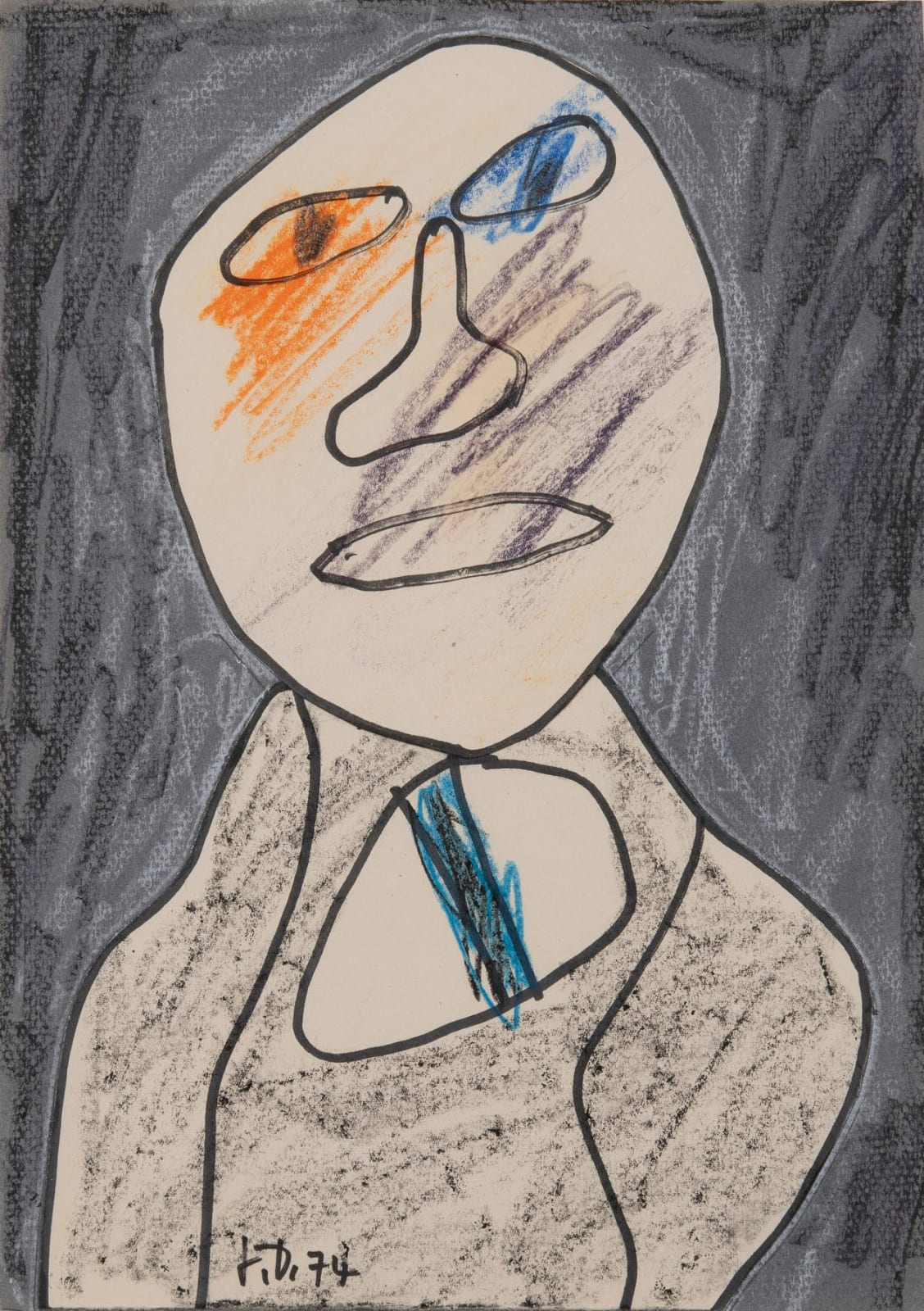Jean Dubuffet
Portrait d’homme, 21 September 1974
Pen, crayon and collage on paper
Signed and dated ‘J. D. 74’ lower left
12 x 8 1/2 in, 30.5 x 21.5 cm
Positioned at the forefront of the post-war movement; ‘Art Brut,’ Dubuffet’s main sources of inspiration came from art created by mentally ill people, children, and those shunned by cultural norms....
Positioned at the forefront of the post-war movement; ‘Art Brut,’ Dubuffet’s main sources of inspiration came from art created by mentally ill people, children, and those shunned by cultural norms. Art Brut defied classical canons of beauty and the art of high modernism, and Dubuffet found within it a raw expressive power vital to his work. Deriving from the pure inner resources of a person, Dubuffet felt this type of art to be truer and more valid than conventional cultural practices.
In 1974 Dubuffet completed the last work in his Hourloupe; a series which had dominated his work for the last 12 years. In the works that followed after, we can already detect dissatisfaction with the previous mode, and a desire to return to sanity; to the everyday and lifeforms of our immediate perceptions and emotions. ‘For a long time I had been very happy in that phantom world but now I was aspiring to set foot on more solid ground.’ For some months after, as if trying to clean out his mind and get back to artistic training, Dubuffet focused on scribbling and sketching, allowing figures and shapes to emerge which pointed to a new way forward.
During this period, he created a series entitled Doodles, Tales, Figurations and Conjectures using only simple school pencils, felt tip pens and simple sheets of coloured paper, often incorporating collage; by cutting and pasting on to cardboard backing. Portrait d’homme from 1974 is exemplary of Dubuffet’s transitional style and his rekindled figurative preoccupations. The vigourously coloured, childlike elements and distorted human form capture perfectly the artist’s anxieties at this juncture and present a ambiguity of interpretation paralleled only by the beginnings of the Hourloupe.
In 1974 Dubuffet completed the last work in his Hourloupe; a series which had dominated his work for the last 12 years. In the works that followed after, we can already detect dissatisfaction with the previous mode, and a desire to return to sanity; to the everyday and lifeforms of our immediate perceptions and emotions. ‘For a long time I had been very happy in that phantom world but now I was aspiring to set foot on more solid ground.’ For some months after, as if trying to clean out his mind and get back to artistic training, Dubuffet focused on scribbling and sketching, allowing figures and shapes to emerge which pointed to a new way forward.
During this period, he created a series entitled Doodles, Tales, Figurations and Conjectures using only simple school pencils, felt tip pens and simple sheets of coloured paper, often incorporating collage; by cutting and pasting on to cardboard backing. Portrait d’homme from 1974 is exemplary of Dubuffet’s transitional style and his rekindled figurative preoccupations. The vigourously coloured, childlike elements and distorted human form capture perfectly the artist’s anxieties at this juncture and present a ambiguity of interpretation paralleled only by the beginnings of the Hourloupe.



